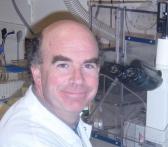Université pour tous de Bourgogne
Chalon-sur-Saône

DETERRE Philippe
Chercheur en immunologie et maladies infectieuses
Diplôme
- 1974 : Ingénieur section Physique (Institut National Polytechnique Grenoble)
- 1978 : Diplôme de docteur-ingénieur en Physique du Solide, Université de Grenoble
Expérience
Prêtre de la Mission de France, docteur en physique et en biologie, directeur de recherche au CNRS, depuis 1991, il travaille au sein du laboratoire d'immunologie cellulaire de l'hôpital de la Pitié-Salpétrière
Chercheur honoraire en immunologie
Laboratoire Immunité et Infection
Unité INSERM 945
Faculté de Médecine Pitié-Salpêtrière
91, boulevard de l’Hôpital
75013 Paris France
Publication
Philippe Deterre a publié en 2009 Chercheurs en science, chercheurs de sens aux éditions de l’Atelier, un livre de dialogue avec Pierre Valiron, un ami astrophysicien et agnostique. Dans cet ouvrage, les deux hommes se questionnent sur les rapports parfois complexes entre la science et la foi et sur le sens à donner à la recherche scientifique.
Articles scientifiques
De la recherche scientifique et de la foi chrétienne (1994) médecine/sciences 10, 704-7
- Deterre, P., D. Paupardin-Tritsch, J. Bockaert and H. M. Gerschenfeld (1981). "Role of cyclic AMP in a serotonin-evoked slow inward current in snail neurones." Nature 290(5809) : 783-785.
- Bigay, J., P. Deterre, C. Pfister and M. Chabre (1985). "Fluoroaluminates activate transducin-GDP by mimicking the gamma- phosphate of GTP in its binding site." FEBS Lett. 191(2) : 181-185.
- Chabre, M., & Deterre, P. (1989). Molecular mechanism of visual transduction. [Review]. Eur J Biochem, 179, 255-266.
- Gelman, L., Deterre, P., Gouy, H., Boumsell, L., Debré, P., & Bismuth, G. (1993). The lymphocyte surface antigen CD38 acts as a nicotinamide adenine dinucleotide glycohydrolase in human T lymphocytes. Eur J Immunol, 23, 3361-3364.
- Pfister, C., Bennett, N., Bruckert, F., Catty, P., Clerc, A., Pagès, F., & Deterre, P. (1993). Interaction of a G-protein with its effector : transducin and cGMP Phosphodiesterase in retinal rods. [Review]. Cellular Signalling, 5, 235-251.
- Gouy, H., Deterre, P., Debré, P., & Bismuth, G. (1994). Cell calcium signaling via GM1 cell surface gangliosides in the human Jurkat T cell line. J Immunol, 152, 3271-3281.
- Deterre, P., L. Gelman, H. Gary-Gouy, C. Arrieumerlou, V. Berthelier, J. M. Tixier, S. Ktorza, J. Goding, C. Schmitt and G. Bismuth (1996). "Coordinated regulation in human T cells of nucleotide- hydrolyzing ecto-enzymatic activities, including CD38 and PC-1 - Possible role in the recycling of nicotinamide adenine dinucleotide metabolites." J.Immunol. 157 : 1381-1388.
- Berthelier, V., J. M. Tixier, H. Muller-Steffner, F. Schuber and P. Deterre (1998). "Human CD38 is an authentic NAD(P)+ glycohydrolase." Biochem.J. 330(3) : 1383-1390.
- Deterre, P., V. Berthelier, B. Bauvois, A. Dalloul, F. Schuber and F. Lund (2000). CD38 in T and B cell functions. Recent advances in CD38 and Related Molecules. K. Mehta and F. Malavasi. Basel, Karger. 75 : 146-168.
- Daoudi, M., E. Lavergne, A. Garin, N. Tarantino, P. Debre, F. Pincet, C. Combadiere and P. Deterre (2004). "Enhanced Adhesive Capacities of the Naturally Occurring Ile249-Met280 Variant of the Chemokine Receptor CX3CR1." J. Biol. Chem. 279(19) : 19649-19657.
- Combadière, B., C. Combadière, and P. Deterre. 2007. Les chimiokines : un réseau sophistiqué de guidage cellulaire. Med Sci (Paris) 23(2):173-179.
- Hermand, P., Pincet, F., Carvalho, S., Ansanay, H., Trinquet, E., Daoudi, M., Combadiere, C., Deterre, P., 2008. Functional Adhesiveness of the CX3CL1 Chemokine Requires Its Aggregation : Role of the transmembrane domain. J. Biol. Chem. 283, 30225-30234.
- Chabre, M., Deterre, P., Antonny, B. (2009) The apparent cooperativity of some GPCRs does not necessarily imply dimerization. Trends Pharmacol Sci 30, 182-7.
- Dorgham, K., Ghadiri, A., Hermand, P., Rodero, M., Poupel, L., Iga, M., Hartley, O., Gorochov, G., Combadiere, C., Deterre, P. (2009) An engineered CX3CR1 antagonist endowed with anti-inflammatory activity. J Leukoc Biol 86, 903-11.
